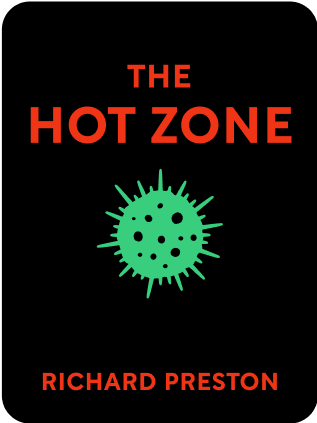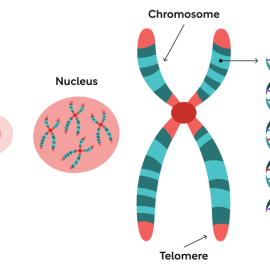

This article is an excerpt from the Shortform summary of "The Hot Zone" by Richard Preston. Shortform has the world's best summaries of books you should be reading.
Like this article? Sign up for a free trial here .
What is Ebola disease? How did Ebola start, and why were there Ebola outbreaks?
The answer to the question “what is Ebola disease?” is complex. Ebola disease is a highly deadly virus known as a hemorrhagic fever virus, as it causes clotting problems, internal bleeding, inflammation, and tissue damage. It is spread through bodily fluids, and does not discriminate between humans and animals.
So what is Ebola disease? Read more about Ebola and its origins below.
What Is Ebola Disease?
So what is Ebola disease, and where does it come from? Viruses hide among all living things—some are harmless, and some have the potential to wipe out huge swaths of people.
The Ebola virus’s sister virus, Marburg, first appeared in the 1960s. Marburg and Ebola have only emerged a handful of times since, but most of the victims and communities hit with Marburg or Ebola have been devastated by the viruses’ brutal physical attacks, high infectiveness, and astronomical kill rates.
We’ll discuss the known outbreaks of Ebola and Marburg, as well as the potential for future outbreaks. But first, let’s talk about what the virus is and does.
The Filovirus Family
What is Ebola disease and is it related to other viruses? Ebola belongs to a family of viruses named filoviruses, meaning “thread viruses,” because they look like threads or ropes under a microscope.
There are four viruses in the filovirus family:
- Marburg, the mildest strain, with a kill rate of 1 in 4
- Ebola Sudan, with a kill rate of about 1 in 2
- Ebola Zaire, the deadliest strain, with a kill rate of 9 in 10
- Ebola Reston, the most recently discovered strain, which we’ll get to later
(Shortform note: Since the book’s publication, three more filoviruses have been identified, all of which are strains of Ebola: Bundibugyo, Taï Forest, and Bombali.)
Viruses are parasites. They lie dormant until they can latch onto another cell, at which point they use the cell’s materials to replicate ceaselessly, until the cell either bursts or is exhausted and destroyed.
The Ebola virus targets its host’s immune system, preventing the host’s body from fighting off the disease. But viruses need a living host to survive, so when a victim dies, the virus must jump hosts. Ebola is transmitted through exposure to the blood or bodily fluids of an infected victim or corpse.
With the exception of Ebola Reston, filoviruses don’t appear to discriminate between people and animals, and they can jump easily from one to the other.
Still, the question of “what is Ebola disease” is complicated. Scientists still don’t know what the filoviruses’ hosts are—whether insects or animals—but the viruses can be transmitted to primates or duikers, a type of antelope. Nor do scientists know where the hosts live, but most cases originated in the region around Mount Elgon, on the border of Kenya and Uganda, not far from Sudan. Specifically, a few cases trace back to Kitum Cave, on the eastern slope of Mount Elgon.
(Shortform note: Scientists still don’t know the hosts of filoviruses, but evidence points to fruit- and insect-eating bats as major carriers—though that doesn’t rule out the possibility that an insect or rat is the original host and simply infected the bats through a bite. Scientists also suspect there could be multiple hosts.)
(Shortform note: Since the book’s publication in 1995, there have been Ebola outbreaks every few years, the majority of which have been Ebola Zaire. Most have been fairly small (less than 100 cases) and centered in Western Africa, but one was a far outlier: From 2013-2016, Ebola Zaire spread across 10 countries, infecting more than 28,000 people and killing more than 11,000.)
So what is Ebola disease? That is a question scientists are still trying to answer.

———End of Preview———
Like what you just read? Read the rest of the world's best summary of Richard Preston's "The Hot Zone" at Shortform .
Here's what you'll find in our full The Hot Zone summary :
- The many different strains of Ebola, including the deadliest kind with a kill rate of 90%
- How scientists unraveled the mystery of a new strain of Ebola
- How Ebola could become airborne, becoming one of the deadliest viruses known






